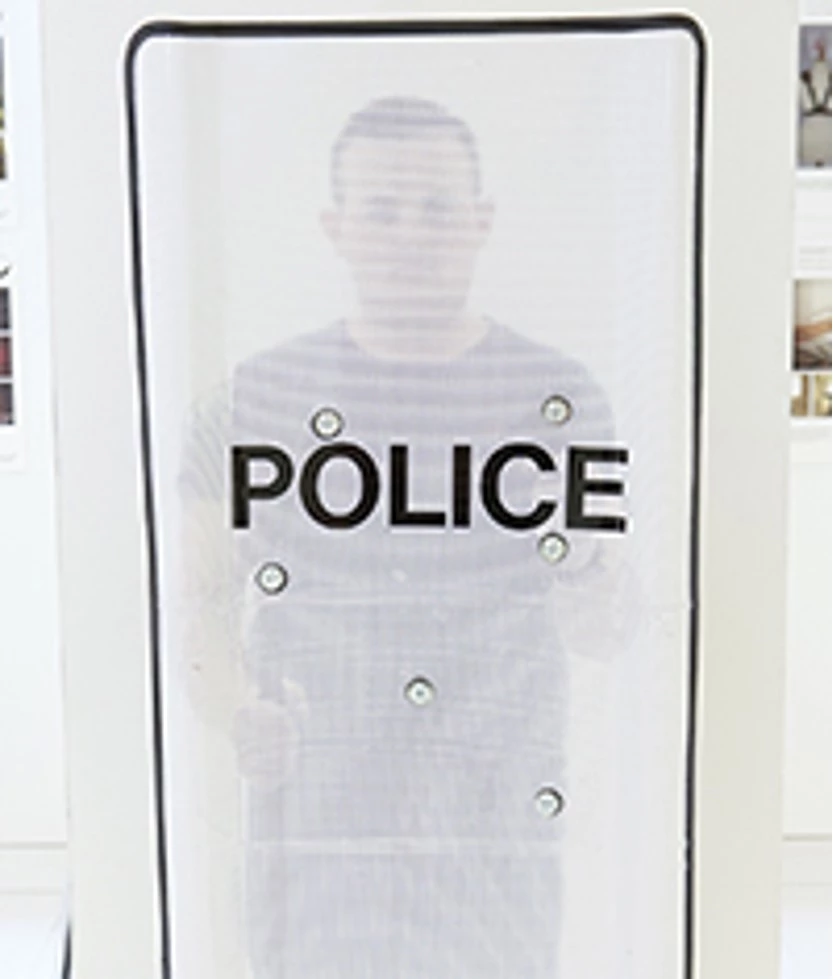Combating riots is a thankless job, and it isn't helped by the fact that the only thing separating rioters and police is a thin barrier of transparent plastic that allows both sides to see each other clearly. To provide the police with a psychological advantage, Nottingham Trent University undergraduate Ben Palmer has come up with a new riot shield that allows the police to see the rioters clearly, but not vice versa.
Riots are frightening and destructive affairs as the forces of law and order break down, putting lives and property in peril. In civilized societies, the police are expected to quell such disturbances with a minimum of force and a maximum of patience. To do this, police forces around the world use methods that would have been familiar to any soldier in ancient Rome.
The basic idea is that riot police use a tactic known as the phalanx. That is, they form a solid line of officers with interlocking shields designed to cover most of the body. These shields create a solid barrier that is very difficult to break, and additional shields can be raised to protect against bottles and other missiles. Behind this line are more police to act as reinforcements, or companies of mounted police who act as a cavalry to ride out unexpectedly and disburse rioters.
The problem with this approach is that the shields used by modern riot police aren't quite fit for purpose. They're transparent to give the officers as wide a view as possible, but they also allow the rioters a clear view of the police line and whatever is behind them. Worse, it allows the rioters to make eye contact with the police, which is poor psychology.
Twenty-one year-old BA Product Design student Ben Palmer interviewed rioters and police, and learned that the police would gain the psychological advantage with "one-way privacy." That is, the police being able to see the rioters, but not the reverse.

The result was a new plastic shield that allows the police to see the rioters clearly, but gives the rioters only the haziest of views – something like a trick mirror or car window tinting. This way, the rioters would be denied eye contact and wouldn't be able to judge the police force's numbers, types, or capabilities.
The new shield is made of polycarbonate, which is standard for riot shields, but the clever bit is a coating of perforated vinyl that creates an optical illusion. The vinyl is filled with tiny holes and is white on one side and black on the other. Anyone on the white side (the rioters) would focus on the bright white surface and not see through the holes except dimly, if at all. The ones on the black side (the police) would focus on the light coming through the holes and see a clear image. Since the effect is based on how humans process vision, it works under most lighting conditions.
Palmer's shield was displayed at Nottingham Trent University's 2016 Art & Design Degree Show.
Source: Nottingham Trent University







